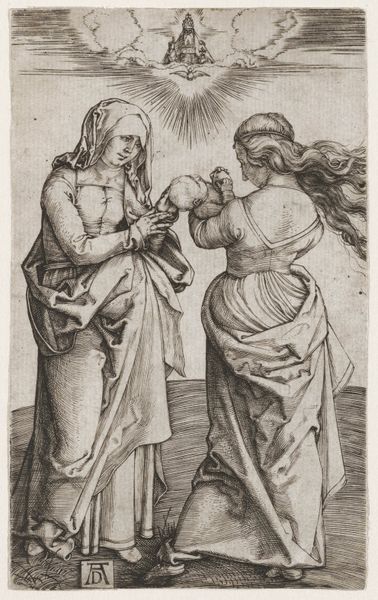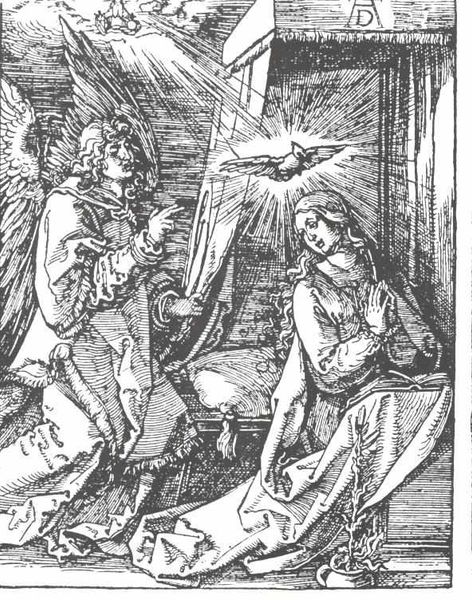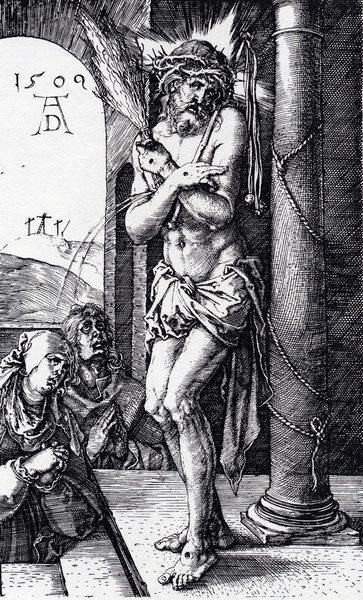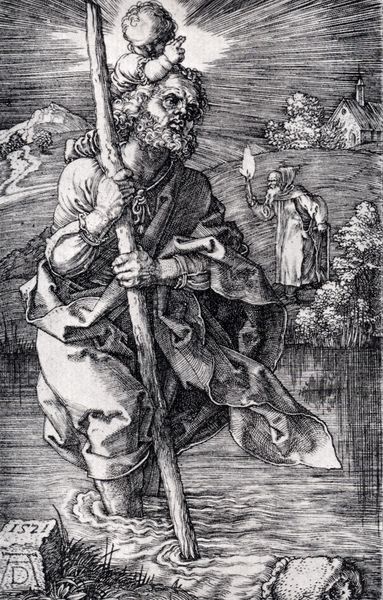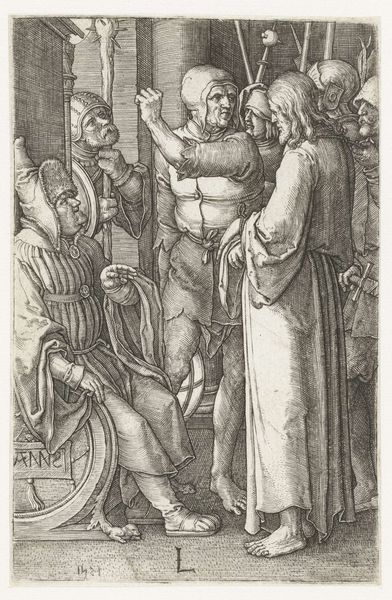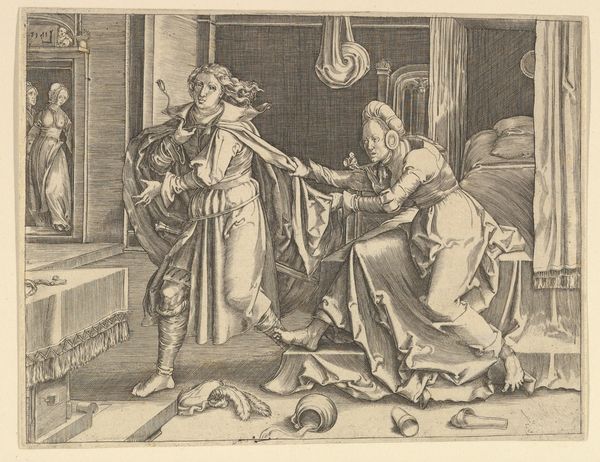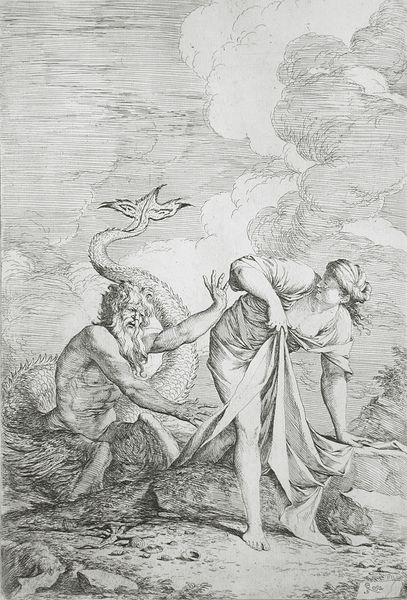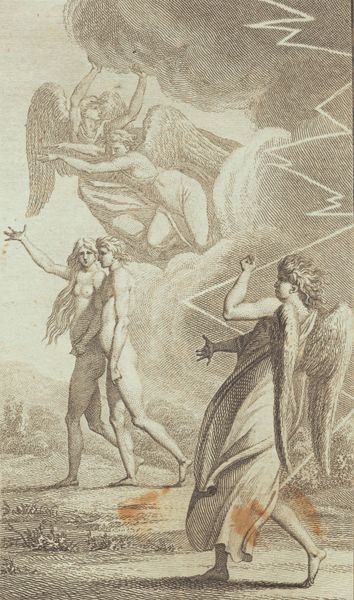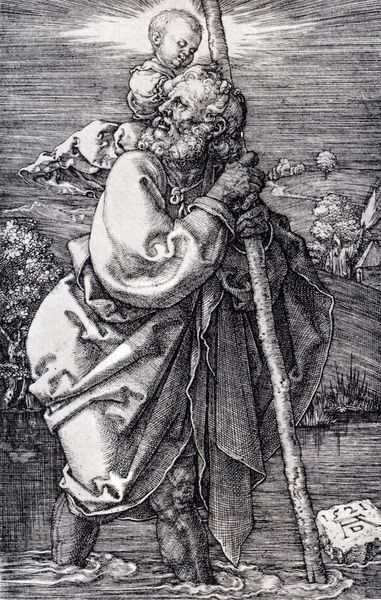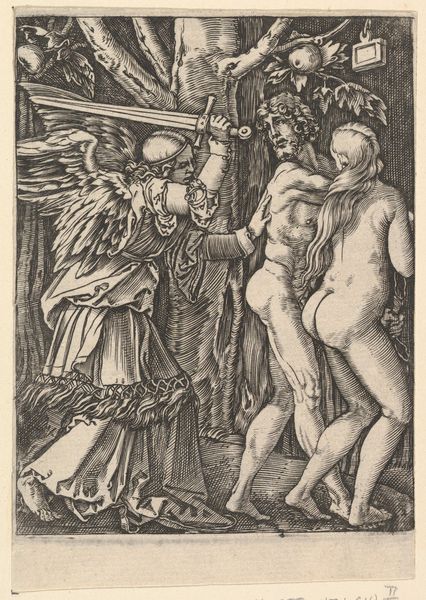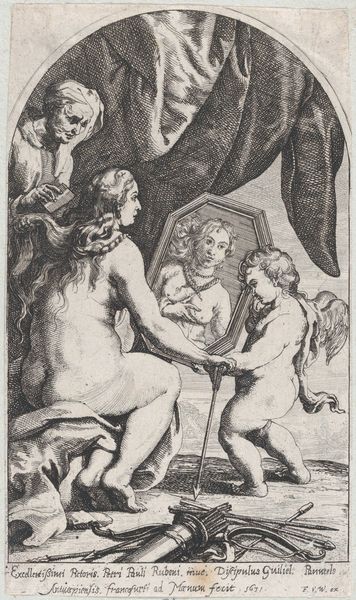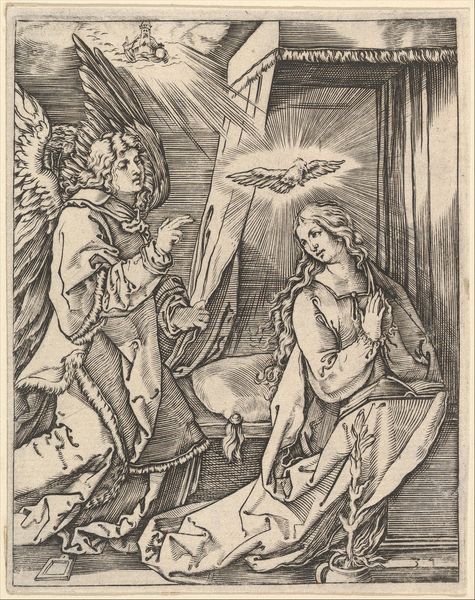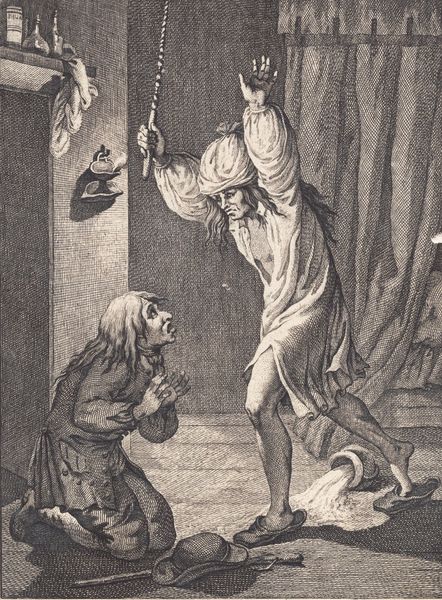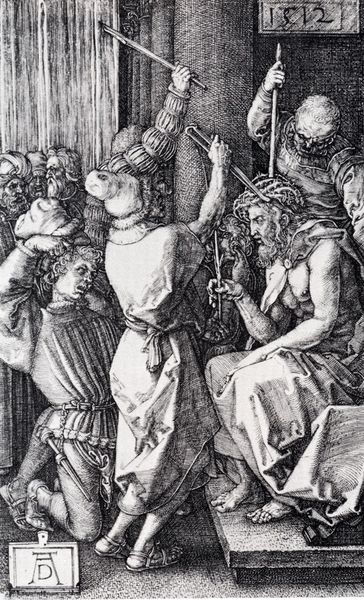
drawing, paper, engraving
#
portrait
#
drawing
#
prophet
#
figuration
#
paper
#
child
#
christianity
#
mythology
#
northern-renaissance
#
engraving
#
christ
Copyright: Public domain
Albrecht Durer made this woodcut, "The Virgin With The Infant Christ And St. Anne" during the early sixteenth century, when The Reformation was beginning to challenge many aspects of the Catholic Church. Here, he presents us with a pyramid of three generations: The infant Christ is held by his grandmother, St. Anne, who is in turn supported by Mary. Above, we see God the Father looking down from heaven. Durer's image creates meaning through the associations and implications of the figures. For example, St. Anne was an important figure in Northern Europe, a region in which dynastic lines were especially important. The woodcut makes reference to the Holy Roman Empire, where the concept of the family was of the utmost importance for succession and legacy. The social conditions of the time certainly shaped Durer's artistic production. To better understand this, one must consider the role that religious institutions played in society. Art historians can provide insight through analyses of period documents and cultural factors. By considering this context, we can better understand the social and institutional function of art.
Comments
No comments
Be the first to comment and join the conversation on the ultimate creative platform.
